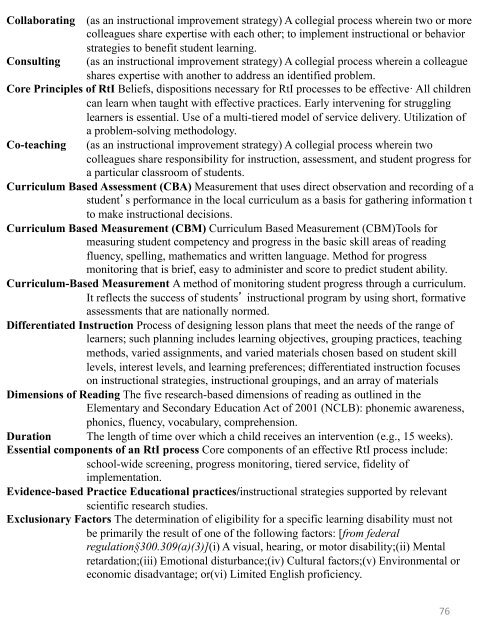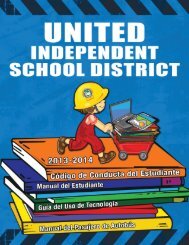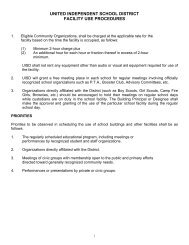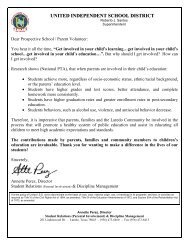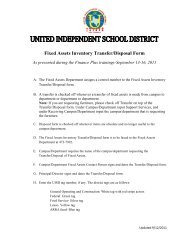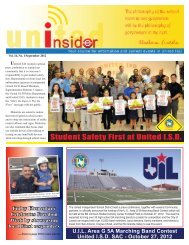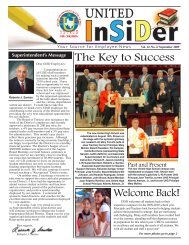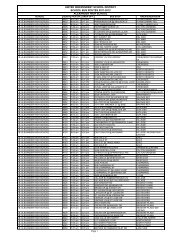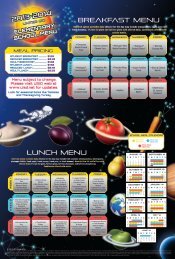Rtl Guide 2013-2014 - United Independent School District
Rtl Guide 2013-2014 - United Independent School District
Rtl Guide 2013-2014 - United Independent School District
You also want an ePaper? Increase the reach of your titles
YUMPU automatically turns print PDFs into web optimized ePapers that Google loves.
Collaborating (as an instructional improvement strategy) A collegial process wherein two or morecolleagues share expertise with each other; to implement instructional or behaviorstrategies to benefit student learning.Consulting (as an instructional improvement strategy) A collegial process wherein a colleagueshares expertise with another to address an identified problem.Core Principles of RtI Beliefs, dispositions necessary for RtI processes to be effective· All childrencan learn when taught with effective practices. Early intervening for strugglinglearners is essential. Use of a multi-tiered model of service delivery. Utilization ofa problem-solving methodology.Co-teaching (as an instructional improvement strategy) A collegial process wherein twocolleagues share responsibility for instruction, assessment, and student progress fora particular classroom of students.Curriculum Based Assessment (CBA) Measurement that uses direct observation and recording of astudents performance in the local curriculum as a basis for gathering information tto make instructional decisions.Curriculum Based Measurement (CBM) Curriculum Based Measurement (CBM)Tools formeasuring student competency and progress in the basic skill areas of readingfluency, spelling, mathematics and written language. Method for progressmonitoring that is brief, easy to administer and score to predict student ability.Curriculum-Based Measurement A method of monitoring student progress through a curriculum.It reflects the success of students instructional program by using short, formativeassessments that are nationally normed.Differentiated Instruction Process of designing lesson plans that meet the needs of the range oflearners; such planning includes learning objectives, grouping practices, teachingmethods, varied assignments, and varied materials chosen based on student skilllevels, interest levels, and learning preferences; differentiated instruction focuseson instructional strategies, instructional groupings, and an array of materialsDimensions of Reading The five research-based dimensions of reading as outlined in theElementary and Secondary Education Act of 2001 (NCLB): phonemic awareness,phonics, fluency, vocabulary, comprehension.Duration The length of time over which a child receives an intervention (e.g., 15 weeks).Essential components of an RtI process Core components of an effective RtI process include:school-wide screening, progress monitoring, tiered service, fidelity ofimplementation.Evidence-based Practice Educational practices/instructional strategies supported by relevantscientific research studies.Exclusionary Factors The determination of eligibility for a specific learning disability must notbe primarily the result of one of the following factors: [from federalregulation§300.309(a)(3)](i) A visual, hearing, or motor disability;(ii) Mentalretardation;(iii) Emotional disturbance;(iv) Cultural factors;(v) Environmental oreconomic disadvantage; or(vi) Limited English proficiency.76


